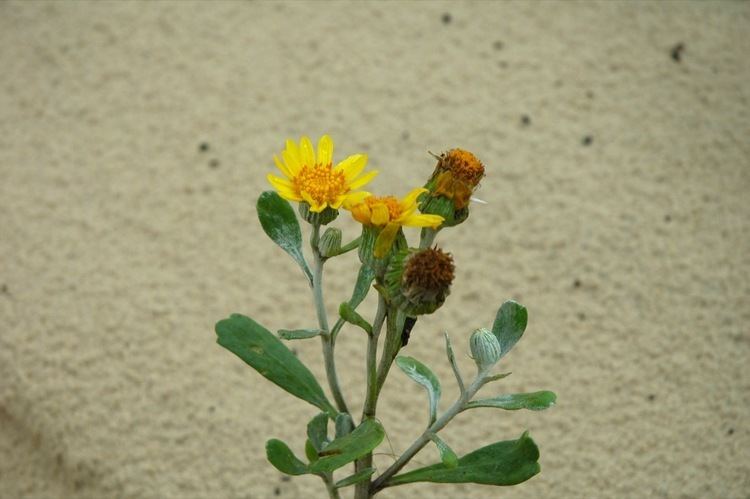Senecio crassiflorus, one of the native South American Senecio and an herbaceous dune dwelling perennial.
Portuguese: margarida-das-dunas
Senecio crassiflorus is not an upright herb, the silvery to white woolly 20 centimetres (7.9 in) to 50 centimetres (20 in) tall plant tends to "lay down and rest" on the dunes and sandy coastal areas it inhabits.
LeavesShaped like spatula with roundish, long, narrow, linear bases to having a broad rounded apex and a tapering base. Mostly 4 centimetres (1.6 in) to 8 centimetres (3.1 in) long, .6 centimetres (0.24 in) to 2 centimetres (0.79 in) wide. The edges are smooth or toothed towards apex and both surfaces woolly.
FlowersBroadly bell shaped, woolly flower heads appear singly or a few together, 1 centimetre (0.39 in) to 1.5 centimetres (0.59 in) in diameter.
Seeds and reproductionAchenes .3 centimetres (0.12 in) to .5 centimetres (0.20 in); pappus 1.5 centimetres (0.59 in) long.Reports claim
S. crassiflorus does not produce viable seeds and spreads itself asexually or via
vegetative reproduction.
Community speciesIpomoea pes-capraeHydrocotyle bonariensisJuncus acutusPanicum sabularumSpartina cf. ciliataHydrocotyle umbellataColombian communitiesNativeNeotropic:
Brazil:
BrazilSouthern South America:
Argentina,
UruguayCurrentNeotropic:
Brazil:
BrazilSouthern South America:
Argentina,
UruguayAustralasia:
Australia:
New South WalesNew Zealand North:
Wellington
